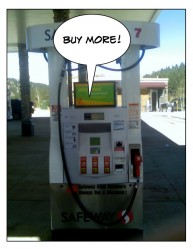You hear a lot about having a “unique selling proposition,” or something that makes you different from all the other software developers, web designers, and online marketers in the world.
Easy to say, but how do you actually stand out from your competition? What can you say or do that will make you different (and memorable)? And what if you’re just starting your business?
No experience, no awards, no problem
My mom is about to start a new career in real estate. We looked at the other agents’ bios and they all listed years of experience, awards won, and commitments to personal service.
For mom, highlighting years of experience won’t work — because she doesn’t have any. She hasn’t won any awards or set any sales records either.
A commitment to personal service is fine, but it’s so overused that it’s virtually meaningless. Who advertises a lack of commitment to their clients? Nobody.
Stand out from the competition
So, after talking to her about her problem, I decided to take a completely different approach. There was one thing all the other bios had in common. and it was offered a great way for my mom to stand out. They were all self-centered. The bios focused on the real estate agent, instead of focusing on the buyer or seller. So, I decided to turn that around.
Instead of emphasizing her credentials and prizes, I wrote her a bio that talked directly to her potential clients and focused on their needs (rather than hers).
It’s got a section for buyers, and one for sellers: directing people to the information that’s relevant for them.
Tell stories
Accolades, number of properties sold, or sales records are great, but what most buyers (or sellers) want to know isn’t what you did for other people. They want to know how you can help them.
So, that’s what her bio does. It doesn’t list facts and figures, it tells stories instead.
The buyers section starts by saying that the first thing she’ll do is ask you what you need. The last thing she’ll do is to cook dinner for you and deliver it the day you move in.
Her background emphasizes the memorable things she’s done, like being commodore of the yacht club, running a catering business, and teaching knitting at a women’s prison.
Think she’ll stand out? Will she be worth talking about? It’s not only more interesting, it’s a better story. At least, I think so (I am, of course, totally objective).





